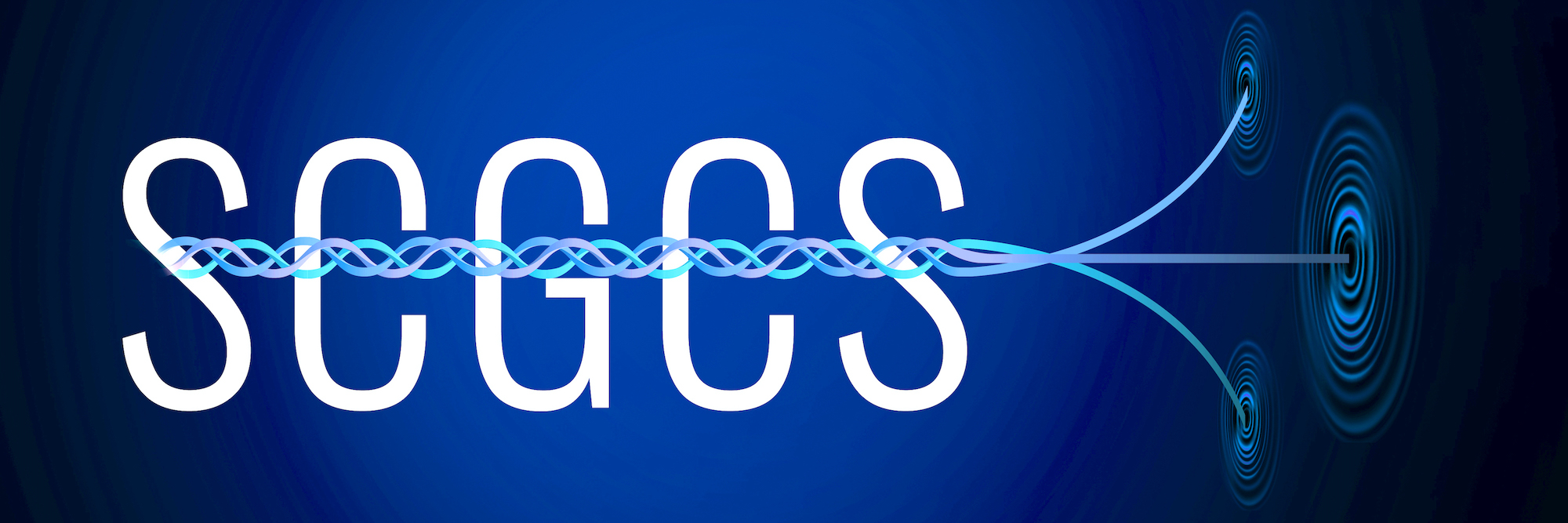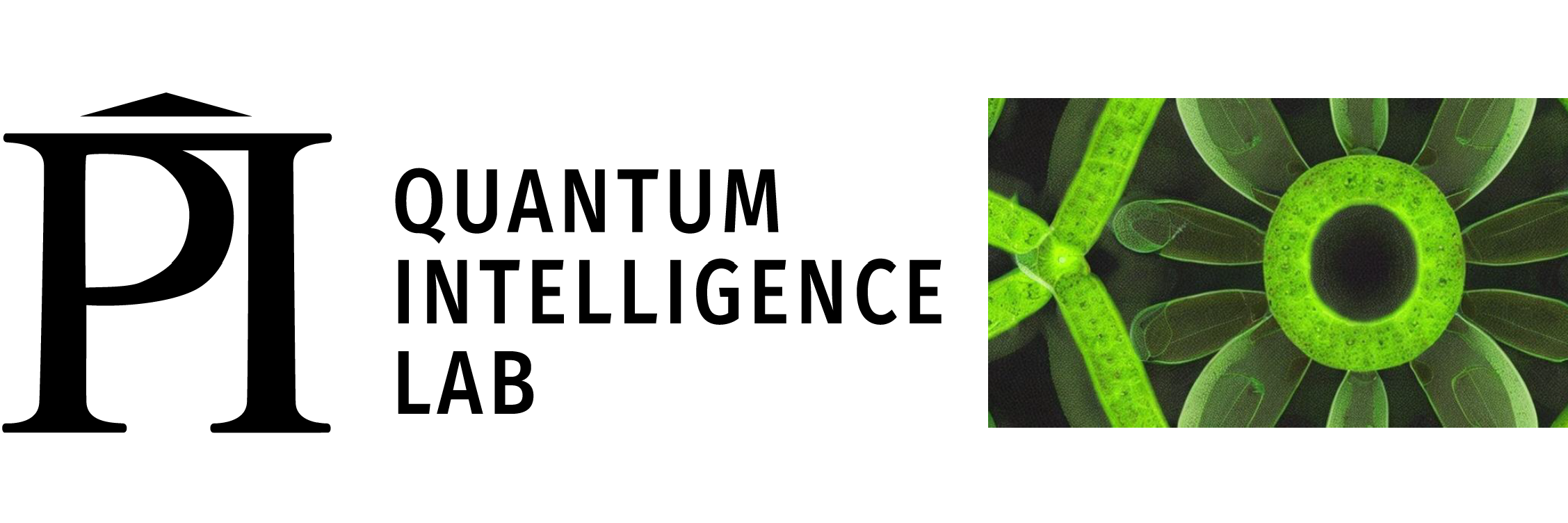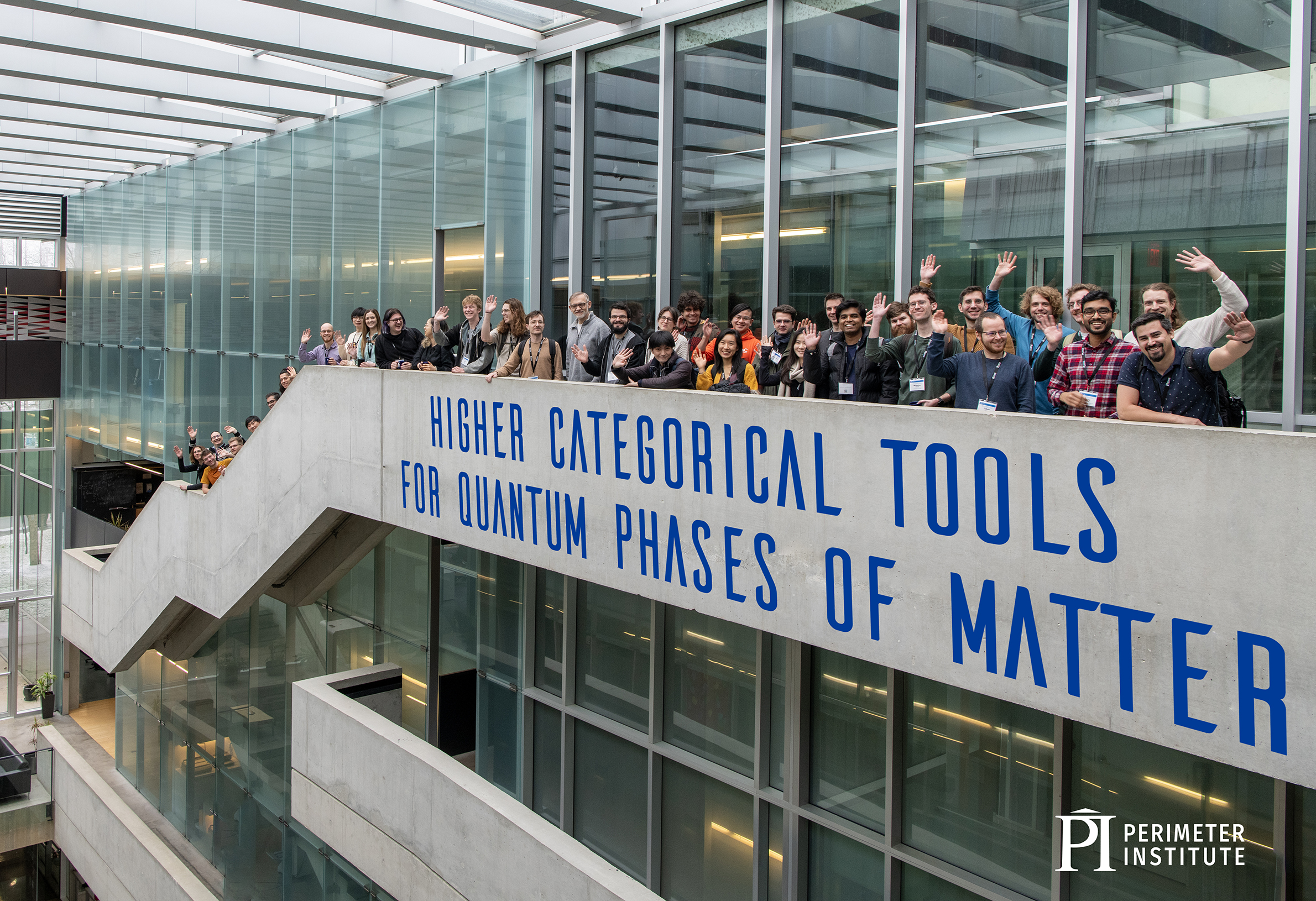Format results
-
Talk
-
Lecture - Statistical Physics (Core), PHYS 602
Naren Manjunath -
Lecture - Statistical Physics (Core), PHYS 602
Naren Manjunath -
Lecture - Statistical Physics (Core), PHYS 602
Naren Manjunath
-
-
Talk
-
Student Discussion - Beautiful Papers - PHYS 773, September 12 - December 1, 2025
Pedro Vieira Perimeter Institute for Theoretical Physics
-
Instructor Discussion - Beautiful Papers - PHYS 773, September 12 - December 1, 2025
Pedro Vieira Perimeter Institute for Theoretical Physics
-
Student Discussion - Beautiful Papers - PHYS 773, September 12 - December 1, 2025
Pedro Vieira Perimeter Institute for Theoretical Physics
-
Instructor Discussion - Beautiful Papers - PHYS 773, September 12 - December 1, 2025
Pedro Vieira Perimeter Institute for Theoretical Physics
-
Student Discussion - Beautiful Papers - PHYS 773, September 12 - December 1, 2025
Pedro Vieira Perimeter Institute for Theoretical Physics
-
Instructor Discussion - Beautiful Papers - PHYS 773, September 12 - December 1, 2025
Pedro Vieira Perimeter Institute for Theoretical Physics
-
-
Talk
-
Extra Lecture - Quantum Matter, PHYS 777 2/2
Chong Wang Perimeter Institute for Theoretical Physics
-
Extra Lecture - Quantum Matter, PHYS 777 1/2
Chong Wang Perimeter Institute for Theoretical Physics
-
Lecture - Quantum Matter, PHYS 777
Chong Wang Perimeter Institute for Theoretical Physics
-
Lecture - Quantum Matter, PHYS 777
Chong Wang Perimeter Institute for Theoretical Physics
-
Lecture - Quantum Matter, PHYS 777
Chong Wang Perimeter Institute for Theoretical Physics
-
Lecture - Quantum Matter, PHYS 777
Chong Wang Perimeter Institute for Theoretical Physics
-
Lecture - Quantum Matter, PHYS 777
Chong Wang Perimeter Institute for Theoretical Physics
-
Lecture - Quantum Matter, PHYS 777
Chong Wang Perimeter Institute for Theoretical Physics
-
-
Talk
-
Lecture - Machine Learning, PHYS 777
Mohamed Hibat Allah University of Waterloo
-
Lecture - Machine Learning, PHYS 777
Mohamed Hibat Allah University of Waterloo
-
Lecture - Machine Learning, PHYS 777
Mohamed Hibat Allah University of Waterloo
-
Lecture - Machine Learning, PHYS 777
Mohamed Hibat Allah University of Waterloo
-
Lecture - Machine Learning, PHYS 777
Mohamed Hibat Allah University of Waterloo
-
Lecture - Machine Learning, PHYS 777
Mohamed Hibat Allah University of Waterloo
-
Lecture - Machine Learning, PHYS 777
Mohamed Hibat Allah University of Waterloo
-
Lecture - Machine Learning, PHYS 777
Mohamed Hibat Allah University of Waterloo
-
-
Talk
-
Lecture - QFT II, PHYS 603
Francois David CEA Saclay
-
Lecture - QFT II, PHYS 603
Francois David CEA Saclay
-
Lecture - QFT II, PHYS 603
Francois David CEA Saclay
-
Lecture - QFT II, PHYS 603
Francois David CEA Saclay
-
Lecture - QFT II, PHYS 603
Francois David CEA Saclay
-
Lecture - QFT II, PHYS 603
Francois David CEA Saclay
-
Lecture - QFT II, PHYS 603
Francois David CEA Saclay
-
Lecture - QFT II, PHYS 603
Francois David CEA Saclay
-
-
Talk
-
Lecture - QFT I, PHYS 601
Gang Xu Perimeter Institute for Theoretical Physics
-
Lecture - QFT I, PHYS 601
Gang Xu Perimeter Institute for Theoretical Physics
-
Lecture - QFT I, PHYS 601
Gang Xu Perimeter Institute for Theoretical Physics
-
Lecture - QFT I, PHYS 601
Gang Xu Perimeter Institute for Theoretical Physics
-
Lecture - QFT I, PHYS 601
Gang Xu Perimeter Institute for Theoretical Physics
-
Lecture - QFT I, PHYS 601
Gang Xu Perimeter Institute for Theoretical Physics
-
Lecture - QFT I, PHYS 601
Gang Xu Perimeter Institute for Theoretical Physics
-
Lecture - QFT I, PHYS 601
Gang Xu Perimeter Institute for Theoretical Physics
-
-
Talk
-
-
Talk
-
Machine Learning Lecture
Damian Pope Perimeter Institute for Theoretical Physics
-
-
Machine Learning Lecture
Mohamed Hibat Allah University of Waterloo
-
Machine Learning Lecture
Mohamed Hibat Allah University of Waterloo
-
Machine Learning Lecture
Mohamed Hibat Allah University of Waterloo
-
Machine Learning Lecture
Mohamed Hibat Allah University of Waterloo
-
Machine Learning Lecture
Mohamed Hibat Allah University of Waterloo
-
Machine Learning Lecture
Mohamed Hibat Allah University of Waterloo
-
-
Talk
-
-
Analogies between QFT and lattice systems
Anton Kapustin California Institute of Technology (Caltech) - Division of Physics Mathematics & Astronomy
-
Models of anyons with symmetry: a bulk-boundary correspondence
Fiona Burnell University of Minnesota
-
Twisted Tools for (Untwisted) Quantum Field Theory
Justin Kulp Stony Brook University
-
Quantum double models and Dijkgraaf-Witten theory with defects
Catherine Meusburger -
Topological sectors in quantum lattice models
Clement Delcamp Institut des Hautes Etudes Scientifiques (IHES)
-
Douglas-Reutter 4d TQFT as a generalised orbifold
Vincentas Mulevičius Vilnius University
-
Weak Hopf symmetric tensor networks
Andras Molnar University of Vienna
-
-
Talk
-
-
-
Quantum Matter Lecture
Timothy Hsieh Perimeter Institute for Theoretical Physics
-
Quantum Matter Lecture
Timothy Hsieh Perimeter Institute for Theoretical Physics
-
Quantum Matter Lecture
Timothy Hsieh Perimeter Institute for Theoretical Physics
-
-
-
-
-
Talk
-
-
[Virtual] Exploring Quantum Science with Machine Learning
Di Luo Massachusetts Institute of Technology (MIT)
-
Near Term Distributed Quantum Computation using Optimal Auxiliary Encoding
Abigail McClain Gomez -
-
-
Automated Characterization of Engineered Quantum Materials
Eliska Greplova Delft University of Technology
-
-
-
-
Talk
-
-
Simulating one-dimensional quantum chromodynamics on a quantum computer: Real-time evolutions of tetra- and pentaquarks
Christine Muschik Institute for Quantum Computing (IQC)
-
-
Five short talks - see description for talk titles
-
Barbara Soda Perimeter Institute for Theoretical Physics
-
Dalila Pirvu Invisible Technologies
- Leonardo Solidoro, Pietro Smaniotto, Kate Brown
-
-
First observations of false vacuum decay in a BEC
Ian Moss Newcastle University
-
Building Quantum Simulators for QuFTs
Jorg Schmiedmayer Technical University of Vienna
-
-
-
-
Statistical Physics (Core), PHYS 602, October 8 - November 7, 2025
The aim of this course is to explore the main ideas of the statistical physics approach to critical phenomena. We will discuss phase transitions, using the ferromagnetic phase transition and the Ising model as our primary example. The renormalisation group approach will be an important part of this course.
-
Beautiful Papers, PHYS 773, September 12 - December 1, 2025
Scroll down to Registration and Enrollment to participate.
Structure:
We will discuss 8 papers which had huge impact in physics. One week Instructor Pedro Vieira will discuss a paper; students should read it beforehand. One week later students discuss recent papers referring to that paper (20 min each student, ~ 3 presentations; at the end of the class Pedro will grade the presentations based on “Physics”, “Presentation”, “Question handling”; and give comments).
By the end of the course, students will have explored a vast set of topics in theoretical physics — spotting potential gaps to be fixed — sharpened their presentation skills through steady practice, and sparked cross-disciplinary conversations through our shared physics language.
Familiarity with Quantum Field Theory and General Relativity is assumed.
The papers:
Sept 12 & 19: On the Quantum Correction for Thermodynamic Equilibrium, Wigner, 1932 Topic: Quantum Mechanics
Sept 22 & 29: Existence theorem for certain systems of nonlinear PDEs, Foures-Bruhat, 1952 Topic: General relativity
Oct 3 & 10: The Renormalization Group and the Epsilon Expansion, Wilson and Kogut, 1973 Topic: Quantum Field Theory
Oct 10 (EXTRA) & 17: More about the Massive Schwinger Model, Coleman, 1976 Topic: 2D Quantum Field Theory
Oct 20 & 27: A sequence of approximated solutions to the S-K model for spin glasses, Parisi, 1980 Topic: Statistical Mechanics
Oct 31 & Nov 7: Quantum Field Theory and the Jones Polynomial, Witten, 1988 Topic: Topological Quantum Field Theory
Nov 10 & 17: Exactly Solvable Field Theories of Closed Strings, Brezin, Kazakov, 1989 Topic: 2D Quantum Gravity
Nov 21 & Nov 28: Unpaired Majorana fermions in quantum wires, Kitaev, 2000 Topic: Quantum Matter/Quantum Information
Schedule: This is a Friday / Monday alternating week schedule from 915am-1045am.
Exceptions: There will be an afternoon session at 130pm on Friday October 10 to avoid the Thanksgiving holiday.
Location & Building Access: Alice Room, 3rd Floor, Perimeter Institute, 31 Caroline St N, Waterloo Participants who do not have an access card for Perimeter Institute must sign in at the security desk before each session. For information on parking or accessibility please contact academic@perimeterinstitute.ca.
Registration and Enrollment: Please sign-up here: https://forms.office.com/r/nDQ6SDxSR4
Zoom Link https://pitp.zoom.us/j/95238695187?pwd=G6EjbywTpOagSxpbMZtgznxmuwFFBp.1
-
Quantum Matter (Elective), PHYS 777, March 31 - May 2, 2025
This course will cover quantum phases of matter, with a focus on long-range entangled states, topological states, and quantum criticality. Instructor: Chong Wang/Subhayan Sahu Students who are not part of the PSI MSc program should review enrollment and course format information here: https://perimeterinstitute.ca/graduate-courses -
Machine Learning (Elective), PHYS 777, February 24 - March 28, 2025
Machine learning has become a very valuable toolbox for scientists including physicists. In this course, we will learn the basics of machine learning with an emphasis on applications for many-body physics. At the end of this course, you will be equipped with the necessary and preliminary tools for starting your own machine learning projects. Instructor: Mohamed Hibat Allah Students who are not part of the PSI MSc program should review enrollment and course format information here: https://perimeterinstitute.ca/graduate-courses -
Quantum Field Theory II (Core), PHYS 603, November 12 - December 11, 2024
This course introduces the functional integral formalism, the renormalization group, and non-abelian gauge theory. Additional topics may be covered as time allows. Instructor: Francois David / Gang Xu Students who are not part of the PSI MSc program should review enrollment and course format information here: https://perimeterinstitute.ca/graduate-courses -
Quantum Field Theory I (Core), PHYS 601, October 7 - November 6, 2024
The first half of the course explains why fields are desirable when quantum mechanics meets special relativity. The second half introduces different kinds of spinor fields and their interactions. Instructor: Gang Xu Students who are not part of the PSI MSc program should review enrollment and course format information here: https://perimeterinstitute.ca/graduate-courses -
Statistical Physics (Core), PHYS 602, October 7 - November 6, 2024
The aim of this course is to explore the main ideas of the statistical physics approach to critical phenomena. We will discuss phase transitions, using the ferromagnetic phase transition and the Ising model as our primary example, with particular emphasis on the renormalisation group approach. Instructor: Emilie Huffman / Maite Dupuis Students who are not part of the PSI MSc program should review enrollment and course format information here: https://perimeterinstitute.ca/graduate-courses -
Machine Learning 2023/24
Machine learning has become a very valuable toolbox for scientists including physicists. In this course, we will learn the basics of machine learning with an emphasis on applications for many-body physics. At the end of this course, you will be equipped with the necessary and preliminary tools for starting your own machine learning projects. -
Higher Categorical Tools for Quantum Phases of Matter
Quantum phases have become a staple of modern physics, thanks to their appearance in fields as diverse as condensed matter physics, quantum field theory, quantum information processing, and topology. The description of quantum phases of matter requires novel mathematical tools that lie beyond the old symmetry breaking perspective on phases. Techniques from topological field theory, homotopy theory, and (higher) category theory show great potential for advancing our understanding of the characterization and classification of quantum phases. The goal of this workshop is to bring together experts from across mathematics and physics to discuss recent breakthroughs in these mathematical tools and their application to physical problems.
Scientific Organizers
Lukas Mueller
Alex Turzillo
Davide Gaiotto
Sponsored in part by the Simons Collaboration on Global Categorical Symmetries

-
Quantum Matter 2023/24
This course will cover quantum phases of matter, with a focus on long-range entangled states, topological states, and quantum criticality.
-
Machine Learning for Quantum Many-Body Systems
 Machine learning techniques are rapidly being adopted into the field of quantum many-body physics, including condensed matter theory, experiment, and quantum information science. The steady increase in data being produced by highly-controlled quantum experiments brings the potential of machine learning algorithms to the forefront of scientific advancement. Particularly exciting is the prospect of using machine learning for the discovery and design of molecules, quantum materials, synthetic matter, and computers. In order to make progress, the field must address a number of fundamental questions related to the challenges of studying many-body quantum mechanics using classical computing algorithms and hardware.
Machine learning techniques are rapidly being adopted into the field of quantum many-body physics, including condensed matter theory, experiment, and quantum information science. The steady increase in data being produced by highly-controlled quantum experiments brings the potential of machine learning algorithms to the forefront of scientific advancement. Particularly exciting is the prospect of using machine learning for the discovery and design of molecules, quantum materials, synthetic matter, and computers. In order to make progress, the field must address a number of fundamental questions related to the challenges of studying many-body quantum mechanics using classical computing algorithms and hardware.
The goal of this conference is to bring together experts in computational physics, machine learning, and quantum information, to make headway on a number of related topics, including:
- Data-drive quantum state reconstruction
- Machine learning strategies for quantum error correction and quantum control
- Neural-network inspired wavefunctions
- Near-term prospects for data from quantum devices
- Machine learning for quantum algorithm discovery
Territorial Land AcknowledgementPerimeter Institute acknowledges that it is situated on the traditional territory of the Anishinaabe, Haudenosaunee, and Neutral peoples.
Perimeter Institute is located on the Haldimand Tract. After the American Revolution, the tract was granted by the British to the Six Nations of the Grand River and the Mississaugas of the Credit First Nation as compensation for their role in the war and for the loss of their traditional lands in upstate New York. Of the 950,000 acres granted to the Haudenosaunee, less than 5 percent remains Six Nations land. Only 6,100 acres remain Mississaugas of the Credit land.
We thank the Anishinaabe, Haudenosaunee, and Neutral peoples for hosting us on their land.
-
Quantum Simulators of Fundamental Physics
This meeting will bring together researchers from the quantum technology, atomic physics, and fundamental physics communities to discuss how quantum simulation can be used to gain new insight into the physics of black holes and the early Universe. The core program of the workshop is intended to deepen collaboration between the UK-based Quantum Simulators for Fundamental Physics (QSimFP; https://www.qsimfp.org) consortium and researchers at Perimeter Institute and neighbouring institutions. The week-long conference will consist of broadly-accessible talks on work within the consortium and work within the broader community of researchers interested in quantum simulation, as well as a poster session and ample time for discussion and collaboration
Territorial Land AcknowledgementPerimeter Institute acknowledges that it is situated on the traditional territory of the Anishinaabe, Haudenosaunee, and Neutral peoples.
Perimeter Institute is located on the Haldimand Tract. After the American Revolution, the tract was granted by the British to the Six Nations of the Grand River and the Mississaugas of the Credit First Nation as compensation for their role in the war and for the loss of their traditional lands in upstate New York. Of the 950,000 acres granted to the Haudenosaunee, less than 5 percent remains Six Nations land. Only 6,100 acres remain Mississaugas of the Credit land.
We thank the Anishinaabe, Haudenosaunee, and Neutral peoples for hosting us on their land.

